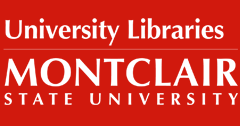Date of Award
5-2017
Document Type
Thesis
Degree Name
Master of Science (MS)
College/School
College of Science and Mathematics
Department/Program
Marine Biology and Coastal Sciences
Thesis Sponsor/Dissertation Chair/Project Chair
Paul Bologna
Committee Member
Scott Kight
Committee Member
Dirk Vanderklein
Abstract
Seagrass beds are considered essential habitats, because they provide food and refuge for a variety of organisms, and they also deliver ecosystem services such as sediment stabilization and carbon sequestration. Seagrass communities worldwide are under threat from a variety of human impacts like eutrophication, dredging, and climate change, but they are also facing threats from non-native species. As a critical primary producer, grazing on seagrass provides a fundamental trophic link to higher level consumers. The bucktooth parrotfish (Sparisoma radians) is a dominant herbivore of seagrasses in tropical and subtropical marine systems. In St. John, United States Virgin Islands, field and laboratory experiments were conducted to assess the herbivory potential of S. radians on the dominant seagrass species present by assessing the number of bites present on seagrass blades and the surface area consumed. Grazing on native turtle grass, Thalassia testudinum, and the invasive seagrass, Halophila stipulacea, was observed and quantified through a series of tethered seagrass experiments and field in situ quantification. In situ (quadrat) sampling showed that both species of seagrass were consumed by S. radians. However, it is clear that T. testudinum was preferred over the invasive, H. stipulacea. Grazing was also higher on both species in mixed beds rather than in monospecific seagrass beds. Laboratory choice feeding experiments were conducted and confirmed that S. radians fed on both T. testudinum and H. stipulacea, with the native seagrass being consumed significantly more based on surface area. Similarly, field tethering experiments results indicate that S. radians actively grazes on both T. testudinum and H. stipulacea, but T. testudinum is significantly preferred. Data also suggests that grazing was lower during July 2016, possibly as a result of the invasion of H. stipulacea. As such, the expansion of the invasive H. stipulacea may have cascading impacts in tropical systems because it is a less preferred food source for an important herbivore in the community. Therefore, understanding the expansion and trophic support of this invasive species in critical for management of these coastal communities.
File Format
Recommended Citation
Pudlak, Elizabeth Elise, "Grazing Potential of Bucktooth Parrotfish (Sparisoma radians) on Invasive Seagrass, Halophila stipulacea, and Native Seagrass, Thalassia testudinum, in St. John, USVI, an UNESCO Biosphere Reserve" (2017). Theses, Dissertations and Culminating Projects. 578.
https://digitalcommons.montclair.edu/etd/578

